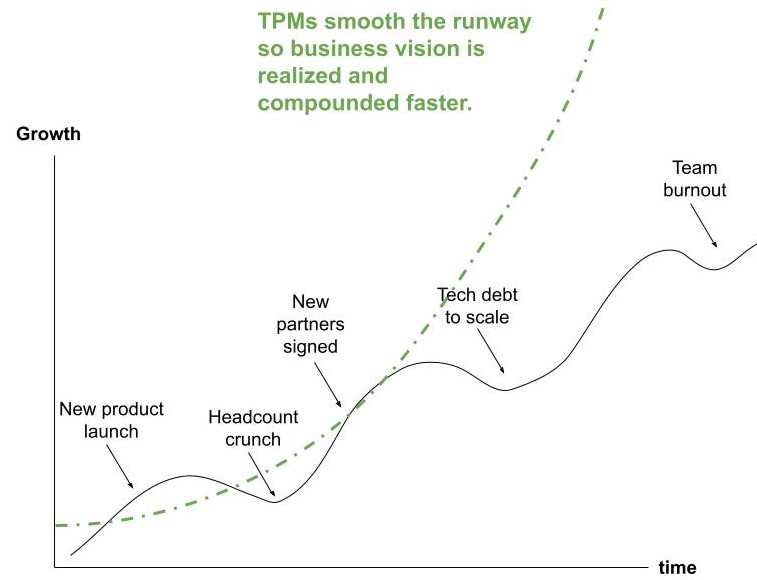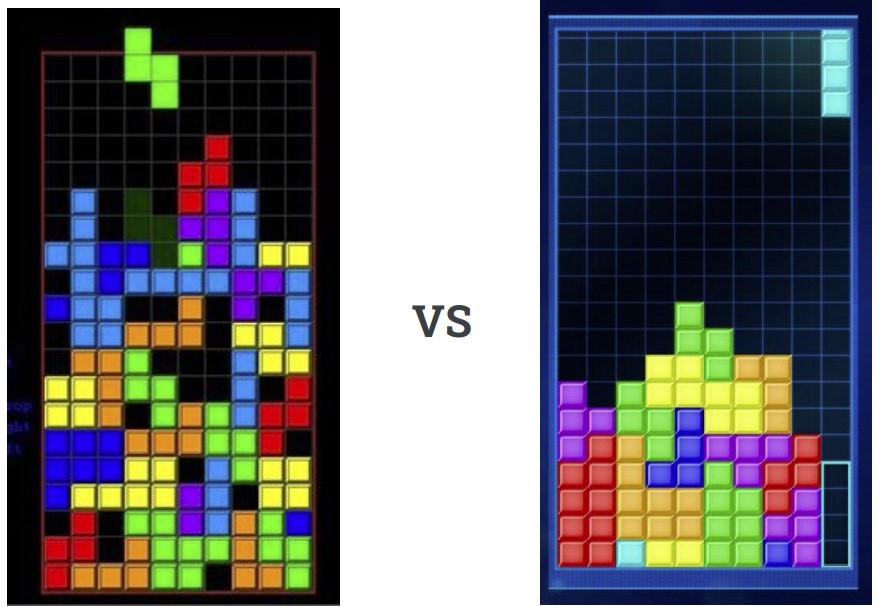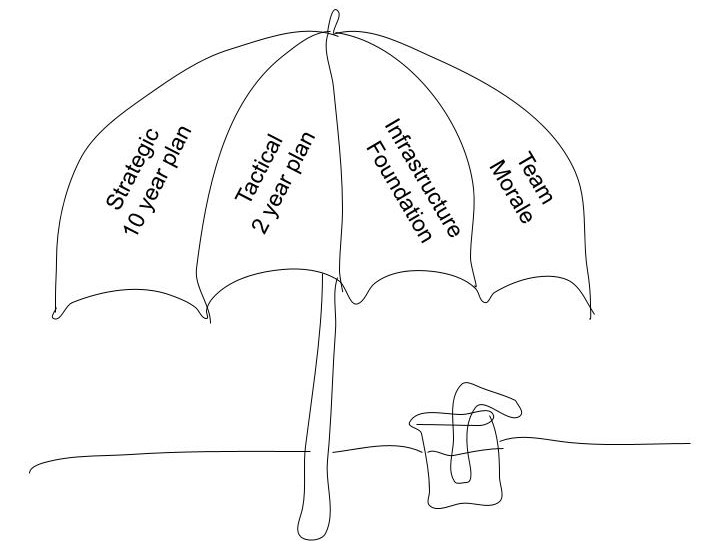Program Management: the often underappreciated, reactively assigned role that’s critical to long-term business success. The textbook definition typically boils down to “execution.”
“Execution” is often equated with putting out fires, a reactive measure. While necessary, that’s honestly pretty dry in and of itself. Sheer magic happens in proactive, strategic Program Management.
Let me take you down a vision quest.
The 3-Legged Stool
- Status dashboards, trackers, processes, coordination. The typical Program Management “stuff.”
- Proactive engagement with business leadership to realize long-term business goals. Enacting execution at a strategic level.
- Community-building empathy to enable others to do their jobs most efficiently.
Imagine the future of a strong, resilient team 5 years from now. You’ve not only reached your engineering goals, but you’re also achieved financial and business goals, AND your team is ready for the next challenge.
There’s countless resources, books, articles, courses, videos on #1. My vision quest will take you beyond #1, into the world of #2 and #3. Explore this new world with me, where you can branch out your existing resources in Program Management.
Vision: TPMs accelerate business growth

Vision: TPMs reduce friction by preventing issues

If it feels difficult, it is, and likely doesn’t need to be.
“Sometimes when you’ve done something well, people won’t know you’ve done anything at all.” Sometimes the role is understated. The adage “reward effort, not outcome” is difficult to measure when the outcome is nebulous avoidance.
Vision: TPMs aim for the high score in Tetris

Execute:
- The right pieces
- The right place
- The right time
Includes
- People & personalities
- Roles & responsibilities
- Business vision & strategy
- Engineering development
Vision: TPMs think about the company umbrella

Take everyone’s inputs. Set a long-term path from now to years from now. Lay the foundation to get there. Many other functions contribute, and TPMs have the core skills not only to execute, but identify gotchas, since we’re often the ones firefighting when things go awry.
- Vision setters: execs
- Market makers: sales, marketing
- Product makers: design, product
- Builders: engineering
- Partners: external companies
- Team energy
Vision: TPMs are an active partner for successful business

TPMs don’t just enable others’ visions; we provide a solid leg for input and planning from the beginning. Allows us to be proactive in reducing friction.
TPMs are an independent input, balancing the company’s goals. We’re focused more internally than externally; teams like Product, Sales, Marketing are inherently more external-facing.
But, internal-to-external balance is needed to avoid overpromising (hurts customers) or underdelivering (lost revenue).
Practical: Balance Business Pipeline with Development Reality

Provide microscope transparency end-to-end (E2E) what’s promised to customers is what we’re tracking to deliver. Be the one measuring the size of the “risk / delta” slinky.
It’s an active partnership with leadership to ensure the team is OK with commits vs reality, and keep that regular temperature check.
- When are contracts and customers being signed?
- Balance business need for custom solutions with scalable infrastructure
- How can we scale in a financially viable way?
- What are the tradeoffs of time, money, custom requirements, strategic investment?
Practical: Build ecosystems and de-risk by driving partnership programs

& multiply ecosystem growth!
Very rarely does a company succeed in a bubble. Products are incredibly intertwined in the world, and tech partnerships in a symbiotic relationship drive trust, fast iteration, and a solid product.
In tech dev partnerships, the goal is mutual benefit, not a cost-service contract. A partner gets to influence the product, and your company gets to work with “real” customers to develop proof-of-concept.
TPMs provide many skills here. Bridging the tech-business outreach communication. Driving engineering development across multiple companies. Ensuring requirements have been met on both sides. Working with Product Managers to blend product vision with technical realities.
Practical: Keep a heartbeat on the health of the team

- TPMs interface with everyone regularly, on a more 1:1 basis than many
- Who’s getting burned out? Can the team survive a V2 launch and address V1’s support needs?
- What optimizations can be done as the product matures into a
different lifecycle stage? Can there be automations or internal
tools to help everyone? - Is the company going to be successful 5 years from now with healthy employees?
- Are people inherently motivated to their core by what they’re
doing, or have they lost sight of the longer vision?
Practical: Juggle needs across coexisting product lifecycle stages

- What is the company’s portfolio of products viewed thru a lens of lifecycle stage? May have a concurrent sunset + just launched product + new product line.
- Nail the dirty, dirty details of transition plans, sunsetting features, with cross-functional teams. Ask the hard questions.
- Will customers be happy or complain with a product transition? What’s the support plan?
- TPMs may not go deep into each area but Shepherd the entire effort, ensuring a “One Team” push, not a marketing stream + Product stream + Legal stream…
Practical: Act as a Systems Engineer to satisfy Qs like initiative viability, modeling, analytics, cost savings

- Take inputs from Product like KPIs and metrics + eng needs + Finance needs. Are these logged at the right places in E2E systems? Can you access them?
- Can we set up ways of modeling our costs in systems so that when Product / execs / Sales want a new customer/feature, we have a way of modeling financial payoff and viability?
- Act as an end-to-end Systems Engineer thinking about budgets: money, latency, SLAs
Vision Quest to Reality
Program Managers may not do all of the above concurrently, but the potential is tangible. I’ve done all of these at one point in my career, and the results are fabulous energy, smooth sailing, and community-building.
There’s truly a force to be reckoned with: imagine setting that force in the direction of your company’s future, to proactively clear the path for business success.
→ Explore more articles in Career & Silicon Valley